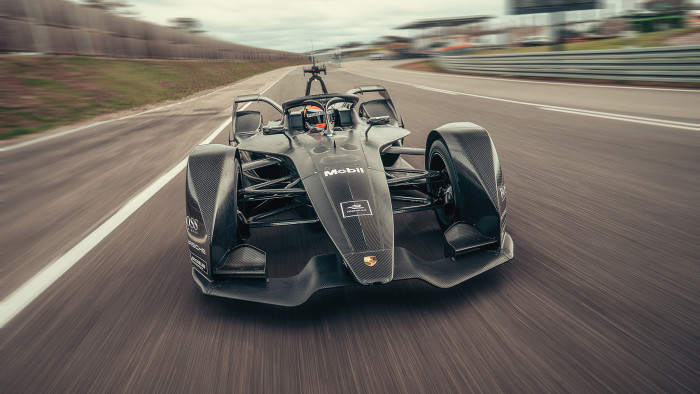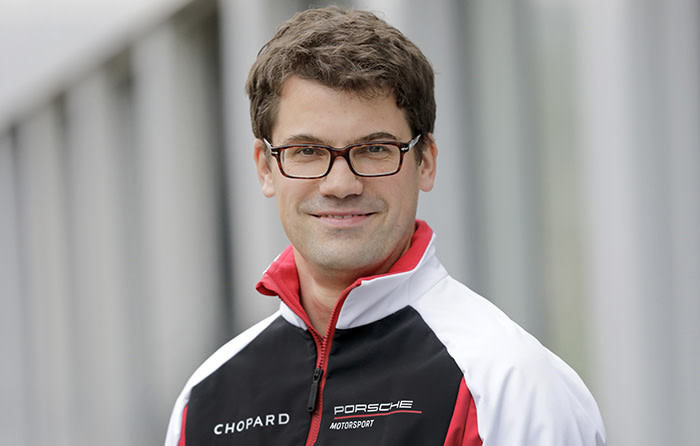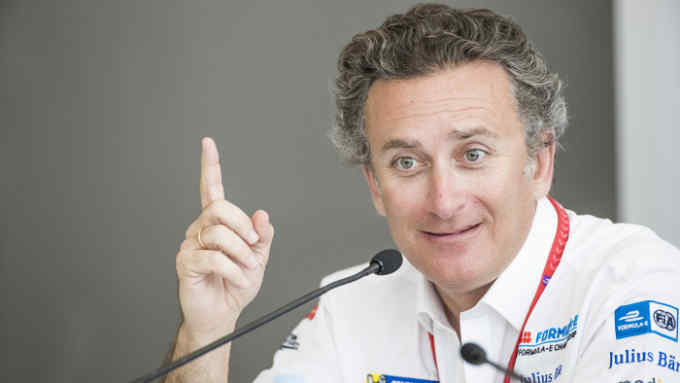Porsche and Mercedes approach Formula E as proving ground for electric technology

Roula Khalaf, Editor of the FT, selects her favourite stories in this weekly newsletter.
When Toto Wolff, the head of Mercedes-AMG Petronas Motorsport, was first introduced to Formula E before the inaugural 2014 season, he was unconvinced: “I didn’t think it would survive the first three years.”
It is easy to see why. With its global circuit, Formula One races reach 2bn views a year and on average attract 192,000 spectators, says Mr Wolff. “There is no sport larger than F1 if you consider there are 21 races yearly, whereas the Olympics is every four years,” he adds. “It dwarfs everything out there.”
So when Formula E founder Alejandro Agag approached Mr Wolff to gauge his interest in signing Mercedes on to the circuit, Mr Wolff dismissed the idea, doubting that electric racing was different enough from F1 to attract fans.
But Mr Agag has tried to create something new. Rules were designed to constrain team spending, enhance competition and engage fans, while holding races in urban centres attracts a younger audience and families. With Fanboost, spectators can even vote to unlock a five-second burst of power for their favourite driver.
With Mercedes and Porsche now entering the series for the upcoming sixth season — joining the likes of Audi, BMW and Nissan — the championship is maturing into a serious sport. The series attracted over 6bn social media impressions in 2017, according to the directors’ report in financial records.
As racing driver Lucas di Grassi said last year: “At the beginning everybody laughed at us, and then they started criticising. And now, they join. That’s how disruptive technology works.”
Malte Huneke, project leader at Porsche, says the German carmaker is joining the ABB FIA Formula E championships for a simple reason: it needs a proving ground for electric technology.

Porsche’s all-electric consumer model, the Taycan, is due out later this year and by 2025 the sports-car maker wants 50 per cent of new vehicle sales to be electrified. “We are looking for a competitive environment to prove what we are capable of developing,” he says.
Each Formula E team is supplied with the same chassis and battery, which eliminates any advantage between teams in aerodynamics or power capacity. But they do have more freedom to work on how energy is deployed, regenerated through braking or managed by software and cooling technology.
“The output, down to the wheel, is in our hands,” Mr Huneke says. “The challenge is similar to what we face with the production car we are developing.” In F1, you can buy anything you want, if you have the money. Formula E teams cannot spend vast amounts on their cars’ technology, however. This makes developing race cars more like building consumer products — what you create has to be practical and affordable.
Unlike F1, there are also strict limits on what data teams can send to the driver. Mr Huneke says this makes it easier to transfer lessons learnt on the racetrack to road cars. “When we sell cars, we don’t sell 10 engineers who sit with the driver,” he says.
The realisation that Formula E could market the new wave of electric vehicles is why Mercedes, too, joined the circuit. The luxury carmaker is planning to roll out 10 all-electric models by 2022 and it sees Formula E as a platform to showcase that it is a leader in the emerging technology, according to Mr Wolff.
Mercedes is the only team that will, as of next season, be in both Formula E and F1: Porsche has not been involved in the latter for some time.
Britta Seeger, sales chief for Mercedes at its parent company Daimler, says she was convinced by electric vehicles when she experienced the thrill of driving a Mercedes prototype. Before then she considered them to be a prudent option, but one that sacrificed performance.
“The early adopters were switching to be conscious of the environment, but if you want to have a big movement of people adopting these cars, you need to address the heart,” she says.
Mr Wolff calls Ms Seeger “the driving force” behind Mercedes’s decision to join Formula E and help to build demand for battery-powered cars. “She convinced hardcore petrol heads such as myself.”
Formula E’s focus on marketing has drawn criticism. Red Bull consultant Helmut Marko once dismissed the series as “a marketing excuse from the automotive industry to distract from the diesel scandal”. He also scoffed that Red Bull would not join as they are “racing purists”, making it clear that Formula E’s rules were not for him.
Porsche’s Mr Huneke, however, says the rules are no more arbitrary than travelling in basketball or being offside in football.
“People complain ‘this is artificial’, but we want it to be exciting,” he says, adding that there has been a different winner in every race so far this season.
Experts believe the unpredictability of the racing is central to why it has been embraced by younger audiences.
“I think Formula E will be for the next generation what F1 was to the last generation,” says Michael Perschke, chief executive of hypercar manufacturer Automobili Pininfarina.
“Why? It’s an interactive series . . . It is not a format limited to the old Bernie Ecclestone system where if you paid hundreds of millions, you got in . . . It’s Racing 2.0.”

Comments